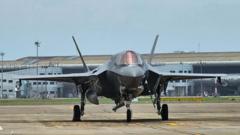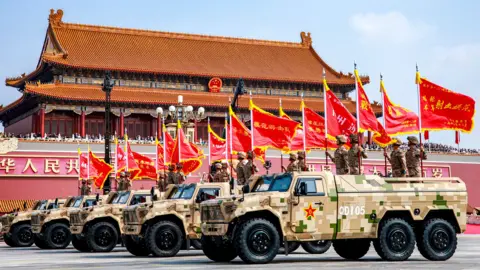In a significant development, a British F-35B fighter jet, which had been stranded at Thiruvananthapuram airport in Kerala, India, for over five weeks, is now prepared for departure. Following an emergency diversion during a mission in the Indian Ocean on June 14, the advanced stealth aircraft encountered a technical snag that prevented its return to its fleet aboard the HMS Prince of Wales.
An airport representative confirmed to the BBC that the aircraft is expected to be "pulled back from the hangar today," signaling the end of its prolonged stay in India. Despite limited details about the aircraft's technical condition, officials have stated that it is confirmed to be airworthy.
The circumstances surrounding the F-35B's extended presence in India raised considerable public curiosity, leading to discussions about how such a sophisticated military asset could remain stranded internationally. Engineers from the Royal Navy were initially dispatched to address the technical failure but were unable to resolve the issue. Consequently, the UK Ministry of Defence sent a specialized team of 14 engineers equipped with the necessary tools for repairs.
There had been concerns that if repair efforts were unsuccessful, the jet might need to be dismantled for transport by a larger cargo aircraft, such as a C-17 Globemaster. As the weeks unfolded, images of the "lonely F-35B," often humorously depicted in memes, became a social media sensation, with many speculating about its reluctance to leave the scenic beauty of Kerala, dubbed "God’s own country."
The situation even captured the attention of British lawmakers, as it was brought up in the House of Commons. The final preparations for the F-35B's departure include arrangements for refueling and the return of the technicians who undertook the challenging repair process. As the British military continues to manage its assets, both logistical and technical, the F-35B's story serves as a reminder of the complexities involved in modern defense operations.
An airport representative confirmed to the BBC that the aircraft is expected to be "pulled back from the hangar today," signaling the end of its prolonged stay in India. Despite limited details about the aircraft's technical condition, officials have stated that it is confirmed to be airworthy.
The circumstances surrounding the F-35B's extended presence in India raised considerable public curiosity, leading to discussions about how such a sophisticated military asset could remain stranded internationally. Engineers from the Royal Navy were initially dispatched to address the technical failure but were unable to resolve the issue. Consequently, the UK Ministry of Defence sent a specialized team of 14 engineers equipped with the necessary tools for repairs.
There had been concerns that if repair efforts were unsuccessful, the jet might need to be dismantled for transport by a larger cargo aircraft, such as a C-17 Globemaster. As the weeks unfolded, images of the "lonely F-35B," often humorously depicted in memes, became a social media sensation, with many speculating about its reluctance to leave the scenic beauty of Kerala, dubbed "God’s own country."
The situation even captured the attention of British lawmakers, as it was brought up in the House of Commons. The final preparations for the F-35B's departure include arrangements for refueling and the return of the technicians who undertook the challenging repair process. As the British military continues to manage its assets, both logistical and technical, the F-35B's story serves as a reminder of the complexities involved in modern defense operations.






















